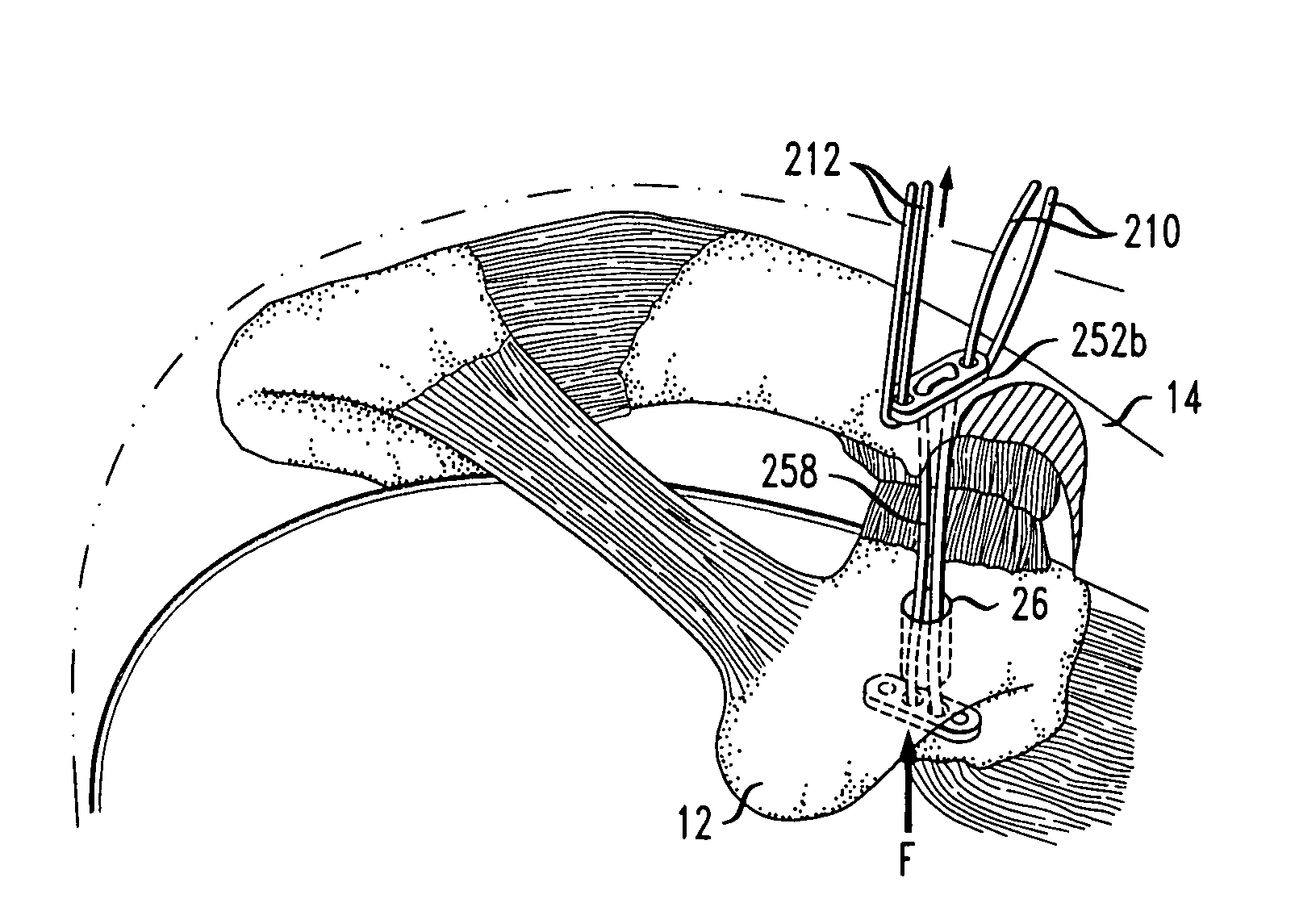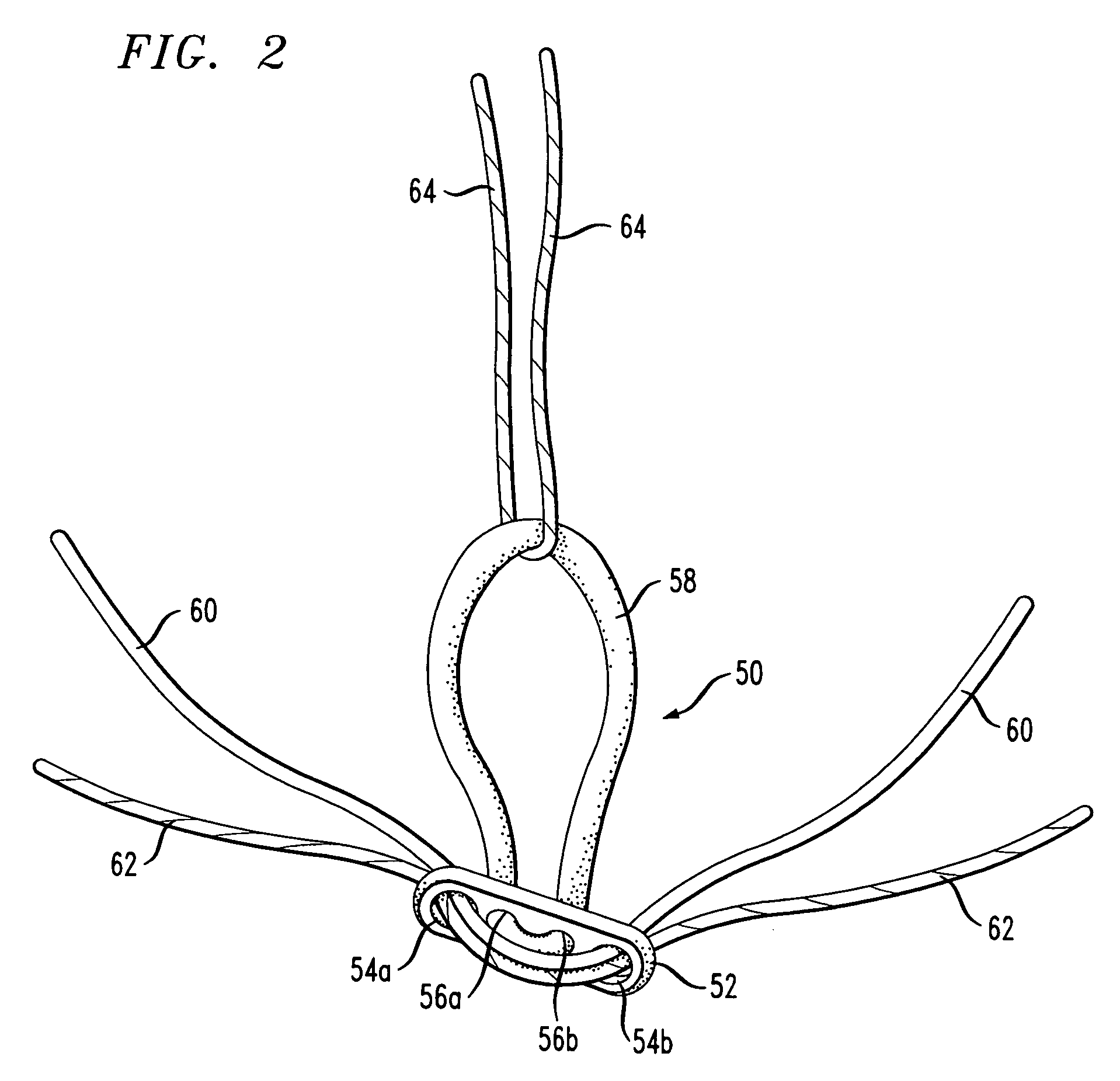Device for treatment of acromioclavicular joint dislocations
a technology for acromioclavicular joints and devices, applied in the field of surgical devices, can solve the problems of poor outcome in over 40% of patients, poor outcome in 20% of non-athletes, and gold standard has not yet emerged
- Summary
- Abstract
- Description
- Claims
- Application Information
AI Technical Summary
Benefits of technology
Problems solved by technology
Method used
Image
Examples
Embodiment Construction
[0028]FIGS. 1 to 6 illustrate a surgical procedure for treatment of an AC joint dislocation, using a first embodiment of a fastener system according to the invention. In FIG. 1, a 2-inch incision is made from the palpable base of the tip of the coracoid 12, to the anterior edge of the distal clavicle 14. Medial and lateral skin flaps are developed. The deltoid is split in line with its fibers, and the coracoid 12 is identified and cleared off all the way to the base. The medial and the lateral edges of the coracoid 12 at the base are clearly identified.
[0029]The clavicle 14 is manually reduced, and while the reduction is being held, a drill tip guide wire 16 is drilled into the top of the clavicle 14 approximately 3 cm medial to the AC joint 18, and midway between the anterior and the posterior border of the clavicle. The drill hole should be directly over the base of the coracoid 12, and the drill wire 16 should be aimed slightly anteriorly. After drilling through the clavicle 14, ...
PUM
 Login to View More
Login to View More Abstract
Description
Claims
Application Information
 Login to View More
Login to View More - R&D
- Intellectual Property
- Life Sciences
- Materials
- Tech Scout
- Unparalleled Data Quality
- Higher Quality Content
- 60% Fewer Hallucinations
Browse by: Latest US Patents, China's latest patents, Technical Efficacy Thesaurus, Application Domain, Technology Topic, Popular Technical Reports.
© 2025 PatSnap. All rights reserved.Legal|Privacy policy|Modern Slavery Act Transparency Statement|Sitemap|About US| Contact US: help@patsnap.com



